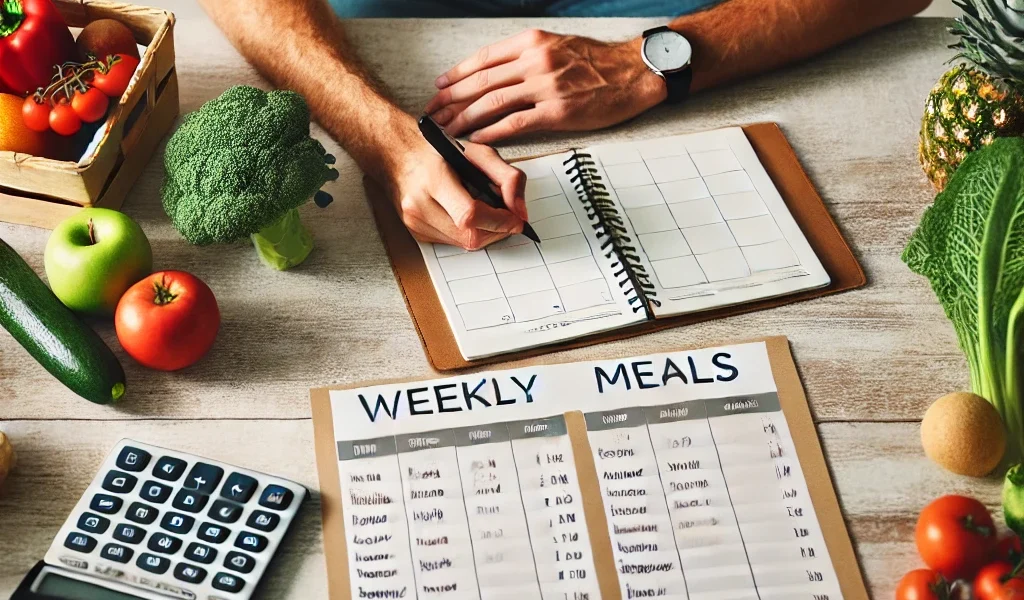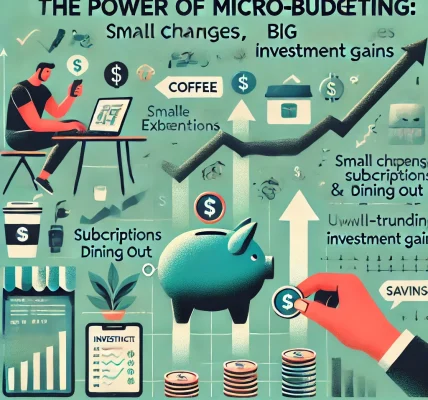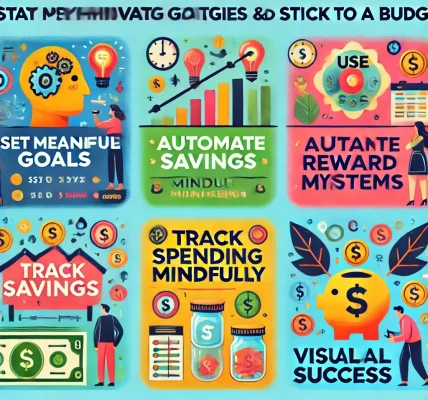Eating healthy on a budget can feel like an impossible task, especially with rising food prices. Many people assume that nutritious meals are expensive and that saving money means compromising on quality. However, with smart meal planning, you can eat healthy and save money without sacrificing nutrition.
This guide will walk you through actionable tips and strategies to help you master meal planning on a budget, ensuring that you and your family enjoy nutritious meals while keeping your finances in check.
Why Meal Planning Helps Save Money
1. Reduces Impulse Purchases
When you plan your meals in advance, you avoid last-minute trips to the store where you’re more likely to buy unnecessary items.
2. Minimizes Food Waste
By planning your meals and using ingredients efficiently, you ensure that perishable foods don’t go to waste.
3. Encourages Healthier Eating
Meal planning encourages you to make healthier food choices and reduces reliance on processed or fast foods.
4. Saves Time and Reduces Stress
Knowing what’s for dinner each night eliminates the stress of making last-minute decisions and saves time in the kitchen.
Step-by-Step Guide to Meal Planning on a Budget
Step 1: Set a Realistic Food Budget
Before you start planning your meals, determine how much you can afford to spend on groceries each week or month. Consider the following factors:
- Family size
- Dietary preferences and restrictions
- Frequency of eating out
📊 Pro Tip: Use budgeting apps like Mint or YNAB (You Need A Budget) to track your food expenses and stay within your budget.
Step 2: Take Inventory of What You Have
Check your pantry, fridge, and freezer to take stock of ingredients you already have. This prevents duplicate purchases and helps you plan meals around what’s available.
✅ Pro Tip: Make a list of items that need to be used up before they expire to avoid food waste.
Step 3: Plan Your Meals Around Sales and Discounts
Check weekly grocery store flyers and online promotions to identify discounts on staple items. Build your meal plan around these discounted items to maximize savings.
🛒 Pro Tip: Use apps like Flipp or Honey to find the best deals on groceries in your area.
Step 4: Choose Simple, Budget-Friendly Recipes
Opt for meals that use affordable and versatile ingredients. Stick to recipes that require fewer ingredients and focus on whole foods such as:
- Rice, pasta, and grains
- Legumes and beans
- Seasonal vegetables and fruits
- Eggs and canned goods
🍲 Pro Tip: Choose recipes that use overlapping ingredients to minimize costs and reduce waste.
Step 5: Prepare a Weekly Meal Plan
Create a weekly meal plan that includes breakfast, lunch, dinner, and snacks. Make sure to include a mix of protein, fiber, and healthy fats to ensure balanced nutrition.
📅 Pro Tip: Designate a day each week for meal planning and grocery shopping to stay organized.
Step 6: Make a Detailed Grocery List
Write down all the ingredients you need for the week’s meals and stick to your list while shopping. Avoid impulse purchases by focusing on your plan.
📝 Pro Tip: Group your grocery list by categories (produce, dairy, pantry, etc.) to make shopping faster and more efficient.
Smart Tips for Saving Money While Meal Planning
1. Buy in Bulk for Staple Items
Purchasing non-perishable items like rice, pasta, oats, and canned goods in bulk can lead to significant savings. Look for warehouse deals or wholesale stores.
🛒 Pro Tip: Store bulk items in airtight containers to prolong freshness.
2. Embrace Meatless Meals
Meat is often the most expensive part of a meal. Incorporating more plant-based meals with beans, lentils, and vegetables can reduce costs and improve nutrition.
🥗 Pro Tip: Plan at least 1-2 meatless dinners each week to save money.
3. Opt for Frozen and Canned Produce
Frozen fruits and vegetables are just as nutritious as fresh ones and often cost less. They also have a longer shelf life, reducing waste.
🥦 Pro Tip: Choose low-sodium canned vegetables and fruits packed in water to maintain nutritional value.
4. Cook in Batches and Freeze Leftovers
Cooking in large batches saves both time and money. Freeze individual portions of leftovers for future meals to avoid ordering takeout.
🍲 Pro Tip: Label and date your freezer meals to keep track of freshness.
5. Use Coupons and Cashback Rewards
Leverage digital coupons, loyalty programs, and cashback apps to save money on groceries.
💰 Pro Tip: Use apps like Rakuten or Ibotta to get cashback on everyday purchases.
Budget-Friendly and Nutritious Meal Ideas
1. Breakfast: Overnight Oats
- Oats
- Milk or yogurt
- Fresh or frozen fruits
- Nuts or seeds
2. Lunch: Vegetable Stir-Fry with Rice
- Seasonal vegetables
- Soy sauce and garlic
- Brown or white rice
3. Dinner: Lentil Soup with Whole Wheat Bread
- Lentils
- Carrots, celery, and onions
- Vegetable broth
4. Snacks: Hard-Boiled Eggs and Fresh Fruit
- High in protein and fiber
- Portable and convenient
Mistakes to Avoid When Meal Planning on a Budget
1. Overbuying Perishable Items
Buying too many fresh fruits and vegetables can lead to spoilage if not used quickly. Stick to a realistic portion size and freeze extras if necessary.
2. Ignoring Portion Control
Cooking large portions can lead to overeating and waste. Practice portion control to stretch your ingredients further.
3. Not Using Leftovers Creatively
Leftovers can be repurposed into new meals. For example, grilled chicken can be turned into tacos or salads the next day.
Benefits of Meal Planning on a Budget
1. Saves Money and Time
You save money by avoiding impulse purchases and reduce time spent deciding what to cook each day.
2. Reduces Food Waste
By planning meals and buying only what you need, you minimize food waste and make the most of your ingredients.
3. Improves Dietary Health
You have more control over your nutrition when you plan balanced meals that include healthy ingredients.
4. Promotes Stress-Free Cooking
A well-thought-out meal plan reduces the stress of figuring out what to cook, especially during busy weekdays.
Conclusion
Meal planning on a budget doesn’t mean sacrificing nutrition or taste. With careful planning, smart shopping, and a focus on whole, budget-friendly ingredients, you can prepare delicious and nutritious meals while keeping your grocery bill in check. Start small, be consistent, and watch how meal planning transforms your eating habits and your wallet!
Ready to save money and eat healthier? Start your meal planning journey today!




